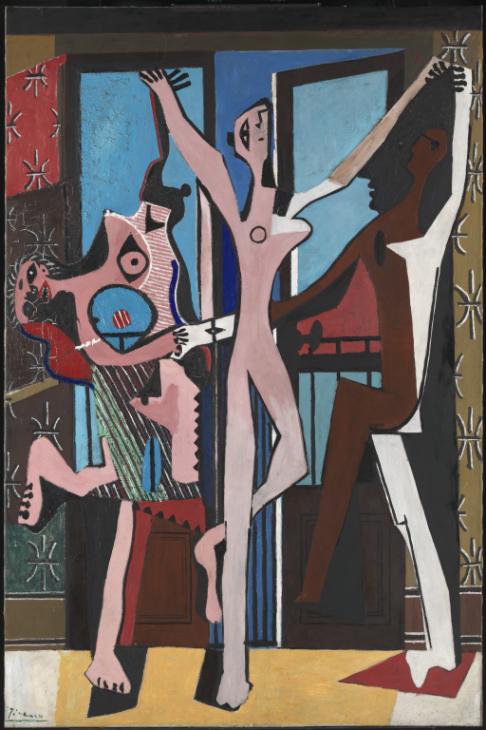Some 32 years after the Tate Gallery acquired its first Picasso, the early Blue Period still life of Flowers (1901) through the Contemporary Art Society, The Three Dancers (1925), was purchased, also with help from the CAS in 1965. It was the first painting of Picasso’s to be sold directly to a museum and was signed by him at the time of purchase, 40 years after it had been painted. It is a conflation of the artist’s synthetic Cubist and neo-classical styles. It evokes a personal episode in the artist’s life of his fellow Spanish artist friend Carlos Casagemas (1880-1901) who was impotent and committed suicide in Paris unable to consummate his love for their French model, known as Germaine, with whom Picasso himself had an affair subsequent to his friend’s death. The left-hand frenzied dancer’s face relates to a mask from Torres Strait, New Guinea, owned by Picasso. The presence of the tall black figure behind refers to the more recent death of Ramon Pichot (1871-1925), another close Spanish artist friend, who had married Germaine in 1906, and who died suddenly in Paris on 1 March.


